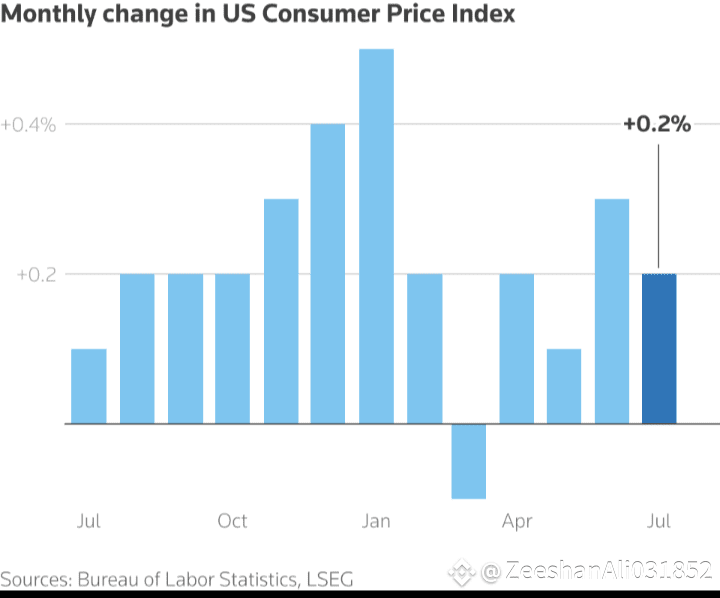CPI Watch: Latest U.S. Inflation Trends & Implications
1. Headline Numbers & Monthly Snapshot
In July 2025, the U.S. CPI rose 2.7% year-over-year, slightly cooler than the forecasted 2.8%.
On a month-over-month basis, inflation was up 0.2%, aligning with economists’ projections.
2. Core Inflation: A Growing Concern
Core CPI, excluding the more volatile food and energy sectors, climbed 3.1% year-over-year—the highest level in months.
Monthly, core CPI increased by 0.3%, marking the largest jump in six months—mainly fueled by rising services costs like medical care, housing, and airfares.
3. Drivers of the Inflation Figures
Energy costs eased, with gasoline declining 9.5% year-over-year, helping keep headline inflation in check.
Food inflation remained moderate—overall food rose 2.9% year-on-year, and groceries were up 2.2%.
Meanwhile, health services, rents, and air travel prices contributed significantly to inflationary pressure.
4. Policy Implications & Market Reaction
Financial markets rallied after the report: the S&P 500 reached record highs, fueled by growing confidence in upcoming Federal Reserve rate cuts, possibly beginning in September.
The probability of a 25 basis point cut in September has surged to around 90–92%.
5. Reporting Integrity & Institutional Trust
The recent firing of BLS chief Erika McEntarfer, followed by President Trump’s nomination of economist E.J. Antoni, has sparked concerns about political interference in inflation data reporting.
This has heightened scrutiny around the integrity and reliability of U.S. inflation statistics.
---
At a Glance: CPI Watch Snapshot
Category July 2025 Value
Headline CPI (YoY) 2.7%
Core CPI (YoY) 3.1%
Monthly Headline CPI +0.2%
Monthly Core CPI +0.3%
Key Takeaways:
Inflation appears to be stabilizing in headline terms, but the stubborn rise in core prices—especially in services—signals underlying pressure.
Market sentiment has turned bullish, anticipating that the Fed may soon ease rates.
Political developments around the BLS signal rising uncertainty and have raised trust issues among economists and investors.
---
Let me know if you'd like this analysis tailored to another region (like Pakistan), or deepen the focus on specific sectors like food, housing, or policy forecasting.